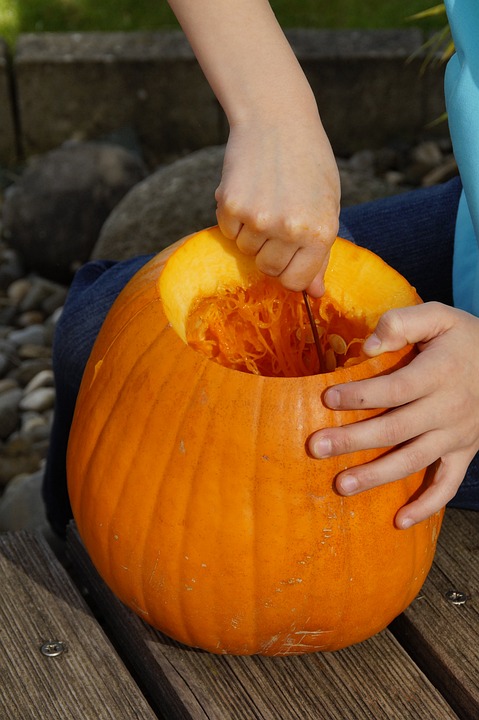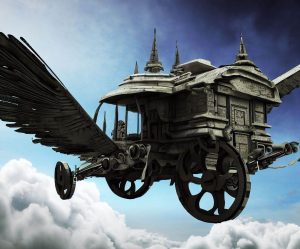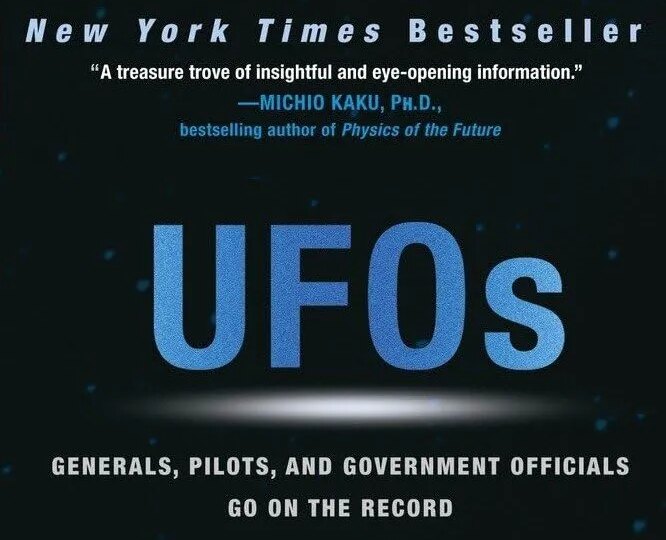
Trick or treating is now an integral part of Halloween celebrations. It is often seen as an American tradition, but history tells us that the custom has deep roots, even in pre-Christian times, with much darker and supernatural reasons.
Trick-or-treating, a beloved Halloween tradition, is now synonymous with costumed children going door-to-door in search of candy. However, the history of this custom dates back centuries and is steeped in incredible folklore, archaic rituals, and shadowy traditions that were once much more sinister than a genial request for sweets.
Going from house to house for food or treats in the autumn and winter parts of the year has countless variations throughout Europe. On the Greek island of Rhodes, children dressed up as swallows and sang a song as they went door to door looking for treats. If the house owners refused, they played pranks on them. In northern parts of Europe, for example, there was the Scandinavian Julebukk, the German Saint's Day. Martin or Rummelpott, which are much closer to winter and Christmas. In the south of Europe we have more traditions in the Catholic version, and in Portugal, children go out on All Saints' Day to receive Pão-por-Deus (bread for God's sake) from their neighbors.
Today, the tradition has become more global and capitalized. An estimated $3 billion is spent on Halloween costumes each year in North America. However, in order to trace the history back to current trick-or-treating, we will focus mainly on Celtic traditions.
Celtic Roots: Samhain and the Spirit World
The origins of trick-or-treating date back to the archaic Celtic festival of Samhain, celebrated over 2,000 years ago in what is now Ireland, Great Britain and northern France. For the Celts, Samhain meant the end of the harvest and the beginning of winter, a time of seasonal transitions when the boundary between the world of the living and the dead was blurred.
It was believed that on the night of October 31, the spirits of the dead returned to Earth, wandering around and causing chaos. It was similar with fairies To you.
To appease these wandering spirits and avoid harm, people did not make offerings of food and drink. Disguises – animal skins and masks – were also worn to blend in with the spirits or confuse malevolent ones who might want to do harm.
It is also said that people would disguise themselves and go door to door to impersonate spirits and accept offerings on their behalf. Dressing up as them was also seen as a way to protect yourself from them. These early costumes, used as a form of protection, laid the foundation for the Halloween costumes we see today.
Medieval Europe: “Souling” and “Guising”
As Christianity spread across Europe, pagan traditions such as Samhain were absorbed and transformed into the Church. In the Middle Ages, the custom of making offerings to the dead evolved into a custom known as suffocating. On All Hallows' Eve (October 31) and All Souls' Day (November 2), the penniless went from door to door and prayed for the souls of the dead in exchange for food, often a type of tiny cake called “Soul cake.”
This practice, the so-called “spiritual”, was common in parts of Britain and Ireland, where people also carried lanterns made of hollowed out turnips, a precursor to today's jack-o'-lanterns.
At the same time, a tradition known as disguise appeared in Scotland and Ireland at least as early as the 16th century. It's a play on words, a disguise. Children dressed up in costumes or disguises – often as ghosts, witches or demons – and went from house to house offering songs, poems or jokes in exchange for food, coins or other tiny treats. Guising allowed people to celebrate the liminal nature of Halloween, when the worlds of spirits and the living briefly intertwined, while also fending off evil with clever disguises.
American Evolution: Mischief and Sweets
When European immigrants, especially from Ireland and Scotland, brought these customs to America in the 19th century, they began to blend with other cultural traditions. The first recorded timekeeping was recorded in America in 1911 in Ontario, Canada, when a reporter wrote about it. Trick or Treat was first spoken of in 1917 at the same location. Of course, it is possible that this has happened before.
By the early 20th century, Halloween had evolved into a community-focused holiday with parties, parades, and festive gatherings. However, trick-or-treating has not yet become commonplace. It wasn't until the 1920s and 1930s, during the Great Depression, that trick-or-treating as we know it began to take shape in the U.S.
Some say that trick-or-treating was invented by adults to change the vandalism associated with Mischief Night, which was mostly about pranks and crime. Halloween was often a night of mischief and pranks – sometimes harmless, sometimes destructive. Young people, especially in cities, committed acts of vandalism or played pranks on neighbors, from knocking over outbuildings to conquering houses. To put an end to this evil, communities and neighborhoods began to organize more organized Halloween activities. However, history says otherwise and it has been an activity for children for centuries.
After World War II, with the baby boom in full swing and sugar rationing ending, the popularity of Halloween trick-or-treating skyrocketed. Candy companies took advantage of the opportunity by selling tiny, individually wrapped candies specifically for Halloween. By the 1950s, the term “Trick or Treating” became widely used across America, and the once mischievous demand for candy evolved into the fun, family-friendly event it is today.
The haunting tradition still lives on
Today, millions of children around the world take to the streets every Halloween, dressed in everything from scary monsters to superheroes, eager to collect candy. The current tradition from America spread to Europe and beyond, imitating archaic rites. It wasn't until the early 2000s that children in Scotland and Ireland began saying “Trick or Treat,” but the tradition has apparently come full circle, although perhaps taking over the more localized versions that existed before.
But beneath this carefree tradition lies a history of archaic fears and beliefs. The disguises, the begging for offerings, and even the lingering concept of “tricks” hark back to a time when Halloween wasn't just a night of fun, but a night in which the spirits of the dead walked among the living.
Although the tradition of trick-or-treating has evolved into a celebration of candy and costumes, the eerie subtext remains – a reminder of a time when the veil between worlds was slim and a knock on the door could simply come from something otherworldly.
Despite the concept of trick-or-treating originating in the United Kingdom and Ireland in the form of trick-or-treating, the exploit of the term trick-or-treating at homeowners' doors was not common until the 1980s, with its popularization in part through the premiere ET movie
Reference:
How 'Trick or Treat' Became a Halloween Tradition | HISTORY
Halloween: Origin, Meaning and Traditions | HISTORY
The history of trick-or-treating and how it became a Halloween tradition
Why trick or treat? – Farmers' almanac
The Celtic Origins of Trick or Treat | Smithsonian
Trick or Treat Story | Merriam-Webster
Image Source: Pixabay.com






